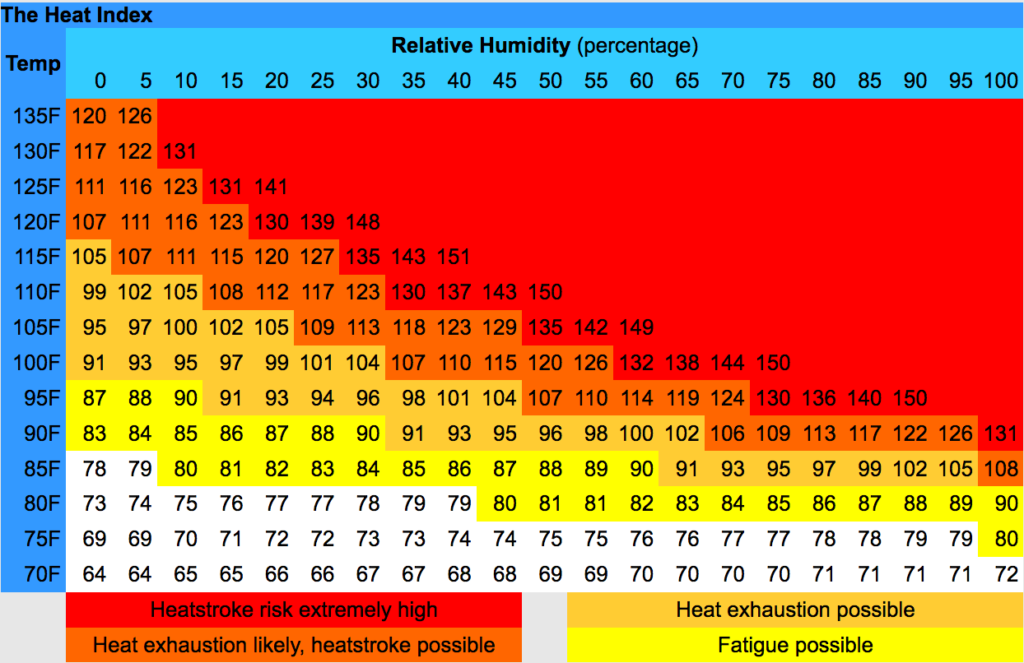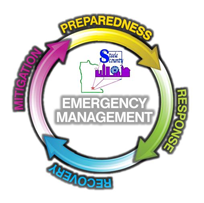 In a normal year, about 175 Americans succumb to the demands of summer heat. This is more deaths than hurricanes, lightning, tornadoes, floods, and earthquakes combined. Only the cold of winter takes a greater toll.
In a normal year, about 175 Americans succumb to the demands of summer heat. This is more deaths than hurricanes, lightning, tornadoes, floods, and earthquakes combined. Only the cold of winter takes a greater toll.
Human bodies dissipate heat by varying the rate and depth of blood circulation, by losing water through the skin and sweat glands. When blood is heated above 98.6 degrees, the heart begins to pump more blood, blood vessels dilate to accommodate the increased flow, and the bundles of tiny capillaries threading through the upper layers of skin are put into operation. The body’s blood is circulated closer to the skin’s surface, and excess heat drains off into the cooler atmosphere. At the same time, water diffuses through the skin as perspiration.
The skin handles about 90 percent of the body’s heat dissipating function. Sweating, by itself, does nothing to cool the body, unless the water is removed by evaporation-and high relative humidity retards evaporation. Heat energy required to evaporate the sweat is extracted from the body, thereby cooling the body. Heat disorders occur when the body loses its ability to shed heat through circulation and sweating. When heat gain exceeds heat loss, or when the body can no longer compensate for fluids and salt lost through perspiration, the core temperature of the body begins to rise, and heat-related illness may develop.
- Symptoms for common heat related illnesses are listed below. In particular, know the differences between heat exhaustion and heatstroke. HEAT STROKE IS A SEVERE MEDICAL EMERGENCY. SUMMON EMERGENCY MEDICAL ASSISTANCE OR GET THE VICTIM TO A HOSPITAL IMMEDIATELY. DELAY CAN BE FATAL.
| Sunburn | Heat Cramps | Heat Exhaustion | Heatstroke |
| Redness and pain. In severe cases swelling of skin, blisters, fever, headaches. | Painful spasms usually in muscles of legs and abdomen possible. Heavy sweating. | • Profuse perspiration. • Cool, moist skin. • Rapid respiration. • Body temperature may be normal, or slightly below normal, or as high as 102F. • Possible giddiness. | • Absence of perspiration. • Hot, dry, red or mottled skin. • Slow deep respiration. • Extremely high body temperature (104F or above, rectally). • Mental confusion, disorientation, delirium, irrational behavior, feeling of euphoria or impending doom, diminished level of consciousness or abrupt loss of consciousness. • Signs of shock. |
Heat Index
The NWS devised the “Heat Index” (HI), sometimes referred to as the “apparent temperature”. The HI, given in degrees F, is an accurate measure of how hot it really feels when relative humidity (RH) is added to the actual air temperature. As an example, if the air temperature is 95F (found on the left side of the table) and the RH is 55% (found at the top of the table), the HI (how hot it really feels) is 110F. This is at the intersection of the 95F row and the 55% column. The orange color indicates you should be aware that eat exhaustion is likely and heatstroke is possible.

Simple precautions can greatly reduce the risk of heat-related illness and death. Some of these are:
- Dress for summer. Lightweight light colored clothing reflects heat and sunlight, and helps your body maintain normal temperatures.
- Protect individuals and the environment from direct sunlight by drawing shades, blinds and curtains.
- Stay out of the sun. Sunburn makes it harder for your body to release heat and cool down.
- Do NOT leave children, elderly adults, or pets in parked cars.
- Reduce, eliminate, or reschedule your strenuous activities to the coolest part of day.
- Keep air circulating and use air conditioning when possible.
- Avoid using fans directed on individuals when the temperature exceeds approximately 100F. Fans can actually increase heat stress when the Heat Index exceeds 100F.
- Take baths, use cool cloths to the head or feet, and/or cool compresses to the groin or underarm area to cool the body. Placing hands and wrists in cool water can help prevent body temperature from accelerating.
- Do not take salt tablets unless specified by a physician.
- Do not drink alcoholic beverages.
- Monitor individuals for early warning signs of dehydration, heat exhaustion and heat stroke.
Additional information is available at:
Updated 10-Feb-2020
